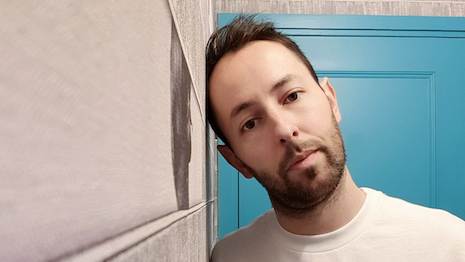 Laurent François is founder and creative strategist of Re-Up
Laurent François is founder and creative strategist of Re-Up
In recent op-eds, some experts in digital strategy and influence try to explain that computer-generated imagery (CGI) influencers are just a fad.
Very quickly, the debate moves to moral issues, in a world of fake news and utterly controversial representations of our humanness.
These CGI influencers would be another step toward the demoralizing of real people in social networks and could lead to shabby consequences on our mental health.
However, I think we are slightly misunderstanding what these CGI social media users stand for and why they are here to stay.
Social networks are not moral
Social networks are businesses, or cables, whose existence and meanings are made or destroyed by us.
It might sound cynical, but a social network such as Instagram is not a moral territory. It is a canvas, a tool, with extreme freedom matching extreme constraints. You cannot show breasts on the public feed, but some immoral communities use direct messages to share child porn.
You can start a beauty revolution – hello Glossier – and you can destroy your brand equity – hello Stefano Gabbana – while playing soft power.
In other words, users are left with a lot of features in which they shape the next usages or habits of a social network which happens to be a business.
Regarding Instagram, from day 1, the company pushed a brilliant idea: allowing people to document their lives and sharing the perception of this reality, hence the rise of filters and captions.
Instagram is an encapsulated version of imagery and feelings, not very far from the CGI influencers, using relatable environments and expressions to make followers react and express social emotions.
People follow fictions and are influenced by fictions. It is not new
Some users might initially get confused about the realness of the imagery. But it is not really an issue. Users on Instagram know more how to control the way they want to be seen and the way they want to see.
In 2018, fake Instagram accounts – or secondary Instagram accounts – were created by a huge number of users to split the fiction of themselves from their real selves.
Instagram finally allowed users to archive posts, so users increasingly play with temporary images instead of leaving everything on their accounts. Users already know or learn how the tool works and to play, protect themselves and “hack” the system.
Secondly, there are not only people on Instagram. There are restaurants, swimming pools, cats and dogs, hotels, forests and characters from films or books. And they influence us a lot in our perception, both for our consumption habits – think about beauty standards – and for our political choices in a positive and negative way.
CGI influencers are just another fiction and another narrative, here to stay and grow, but also limited to a certain effect on people.
CGI influencers are carefully handled, created, managed by a team of human beings
Funnily enough, we tend to forget that behind CGI characters, there is always a team of creatives, marketers, designers and PR agencies who take care of their products. They have designed a fiction, like a Netflix show with episodes, with an undefined future depending on the success of the product.
As with any fiction, its success requires a couple of elements. First is a plot, or a “thread.” In this case, when Rihanna’s Fenty Beauty works with Shudu, it is a new episode to a shared story.
Next is the character and the support characters, including brands, places and people.
Finally, there is the audience. CGI influencers can only “work” if they gain enough traction.
The main difference with a Mickey Mouse, Barbie doll or any Teddy Bear is maybe in the flow of communication and the specificity of the strange attachment that Instagram spreads to its users.
As per a modern version of a Tamagotchi, what might be the most disturbing element is our ability as human beings to offer an existence to a non-human, non-animal, non-vegetal construct.
Problem with the word “influence”
Everybody talks about influence. But no one truly knows its borders.
Close friends are supposed to be more influential. But when it comes to solving a technical issue with your computer, do you not ask Google?
Niche influencers are supposed to be tremendously more powerful than influential blockbusters such as Rihanna. But when it comes to experimenting with a new Fenty product, do you not want it?
INFLUENCE IS A mess, and that is why it is so great to work on, for, with or against it. It cannot be automated. Its routes require strange chemistry. It cannot be totally earned, nor marketed.
The only thing we know is that a digital influencer is a person, a thing, who/which can generate change among one or more people. CGI similarly do, not by stealing real human beings’ influence, but by providing another scheme.
Laurent François is founder and creative strategist of Re-Up, a Paris-based agency. Reach him at laurent@thisisreup.com.
